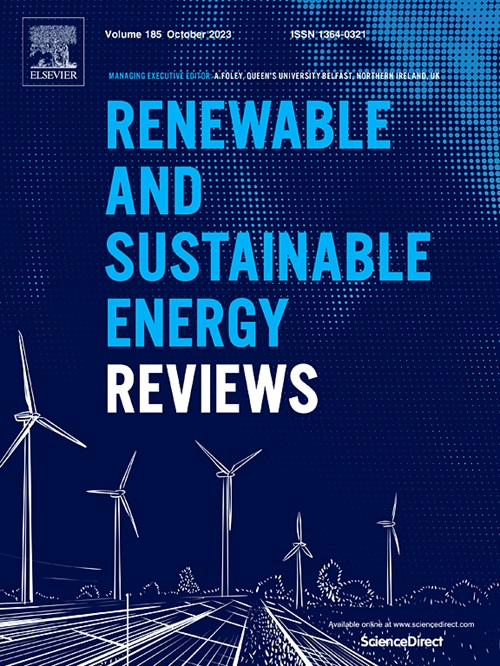Multi-energy microgrid design and the role of coupling components—A review
IF 16.3
1区 工程技术
Q1 ENERGY & FUELS
引用次数: 0
Abstract
To create an eco-friendly and sustainable energy system, there is a requirement to decrease emissions and energy wastage across the electricity, transportation, and thermal sectors. As energy demands and consumption patterns are diverse, efficient systems such as multi-energy microgrids are pioneered to increase renewable penetration, reliability, resilience, and energy efficiency. However, the design and analysis are challenging because of intermittent renewable generation, high investment costs, robust network coupling, and dynamic load characteristics. This review examines the portfolio of components found in a multi-energy microgrid, particularly to meet electrical and heating loads. Additionally, this review analyzes the current modeling approaches for the components and their application in the planning, energy management, and control framework. The findings from this analysis highlight significant challenges and potential strategies to consider when designing multi-energy microgrids to support United Nations Sustainable Development Goals (SDG) 7, 11 and 13, which target clean, accessible, affordable, and low-emission energy systems.
One critical insight from this study is the additional flexibility and efficient renewable integration enabled by installing coupling components such as combined heat and power plants, electric heat pumps, and electric boilers. It was identified that the model accuracy of multi-energy microgrid components, particularly renewables, and interaction between the electrical and heating networks significantly impact the planning and operation of the multi-energy microgrids. In addition, emerging technologies such as fuel cells and electric vehicles and innovative solutions such as artificial intelligence, blockchain, and cybersecurity were discussed to improve multi-energy microgrid operation.

求助全文
约1分钟内获得全文
求助全文
来源期刊

Renewable and Sustainable Energy Reviews
工程技术-能源与燃料
CiteScore
31.20
自引率
5.70%
发文量
1055
审稿时长
62 days
期刊介绍:
The mission of Renewable and Sustainable Energy Reviews is to disseminate the most compelling and pertinent critical insights in renewable and sustainable energy, fostering collaboration among the research community, private sector, and policy and decision makers. The journal aims to exchange challenges, solutions, innovative concepts, and technologies, contributing to sustainable development, the transition to a low-carbon future, and the attainment of emissions targets outlined by the United Nations Framework Convention on Climate Change.
Renewable and Sustainable Energy Reviews publishes a diverse range of content, including review papers, original research, case studies, and analyses of new technologies, all featuring a substantial review component such as critique, comparison, or analysis. Introducing a distinctive paper type, Expert Insights, the journal presents commissioned mini-reviews authored by field leaders, addressing topics of significant interest. Case studies undergo consideration only if they showcase the work's applicability to other regions or contribute valuable insights to the broader field of renewable and sustainable energy. Notably, a bibliographic or literature review lacking critical analysis is deemed unsuitable for publication.
 求助内容:
求助内容: 应助结果提醒方式:
应助结果提醒方式:


